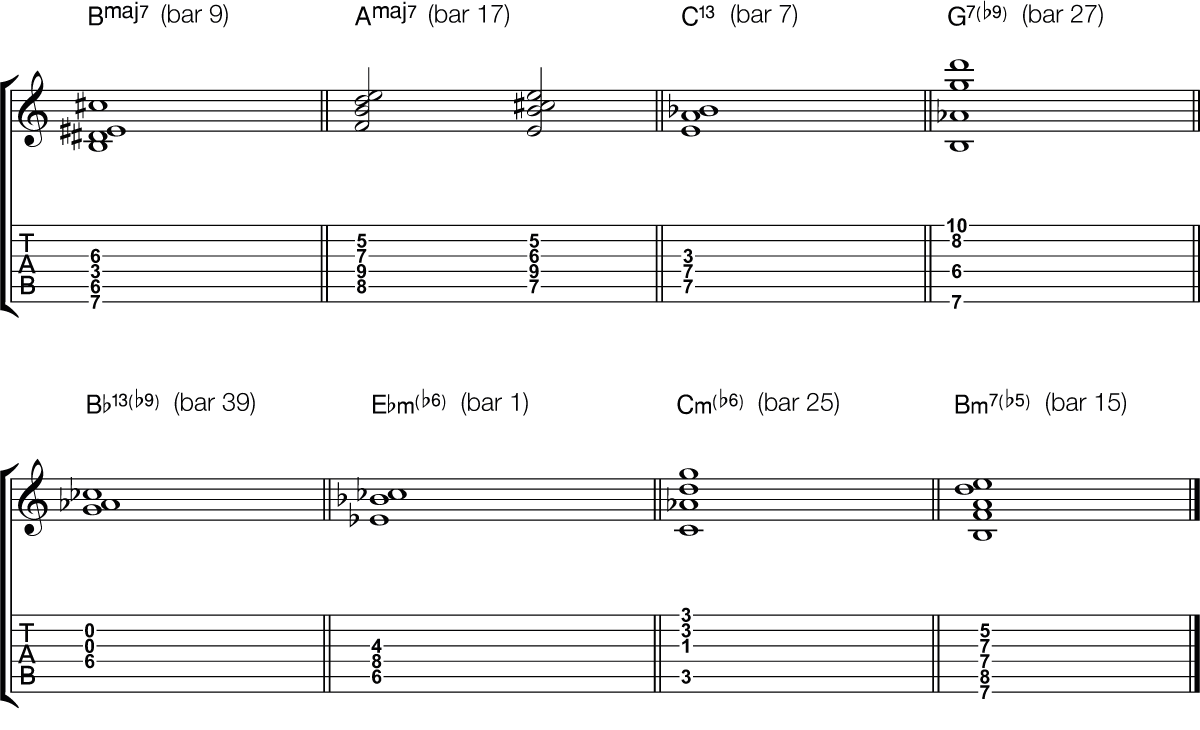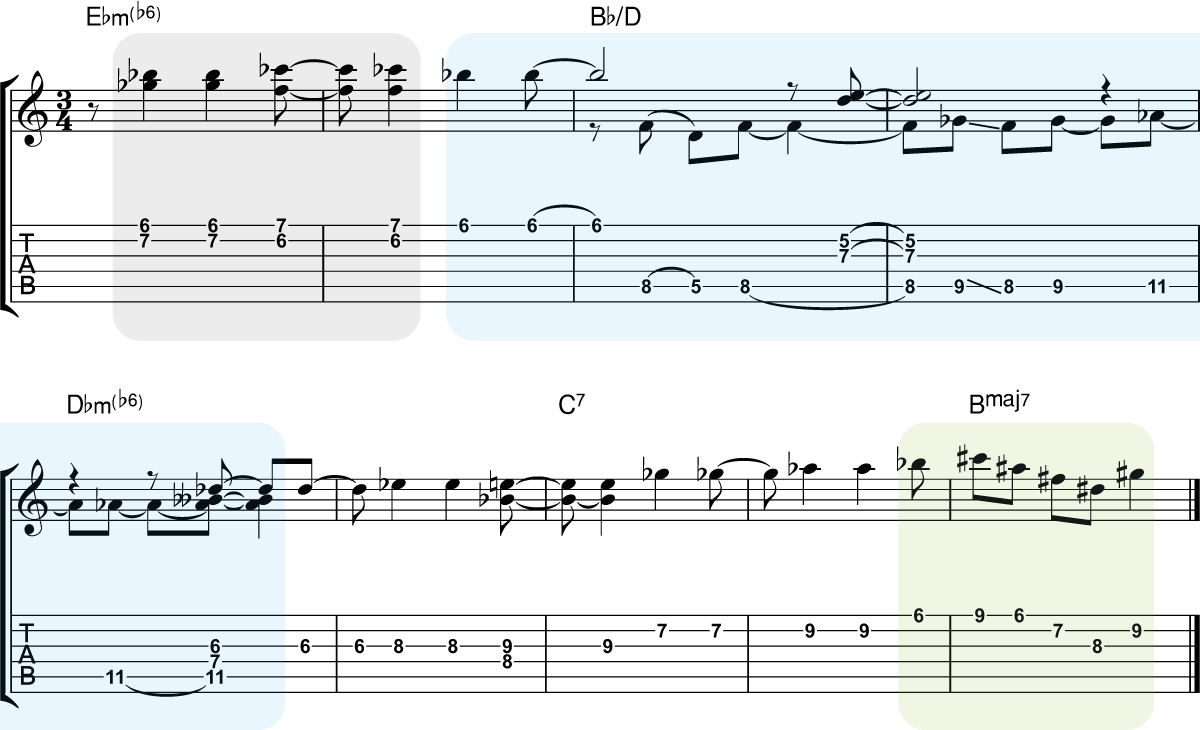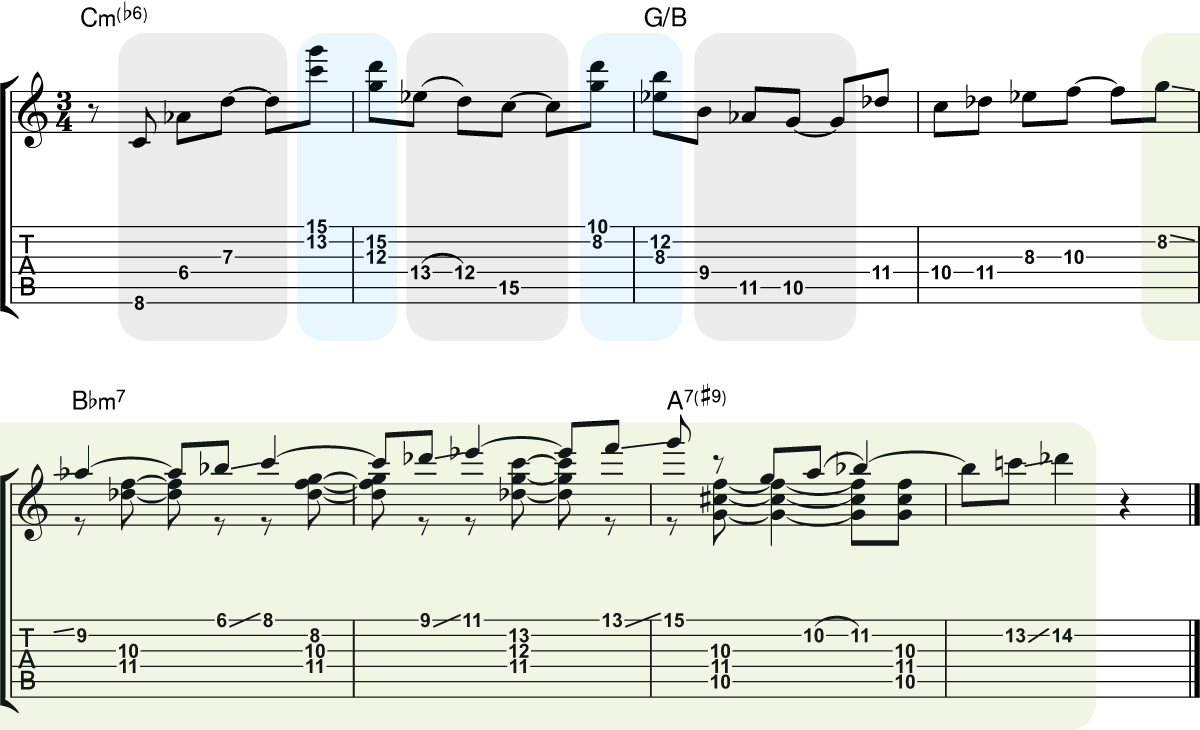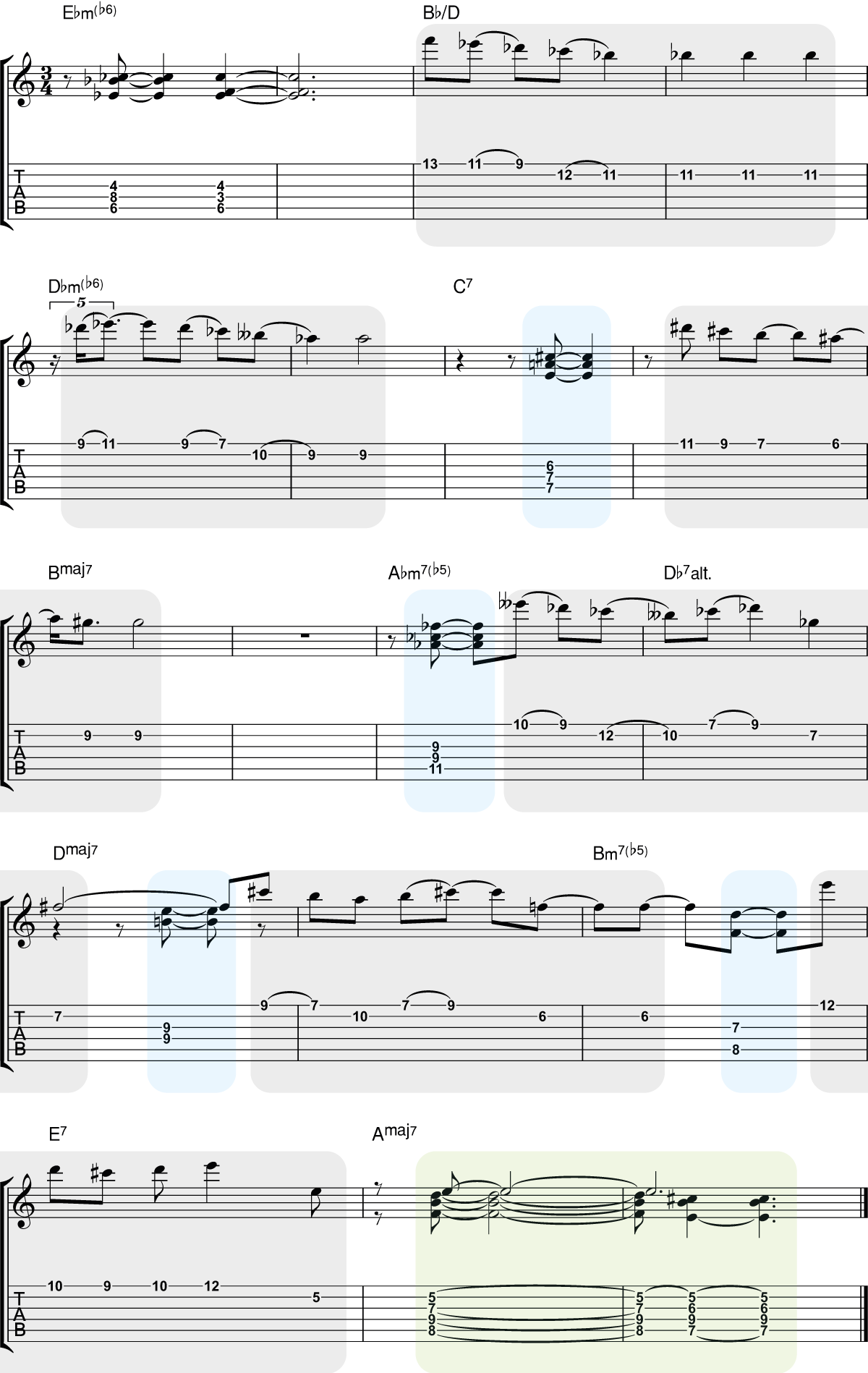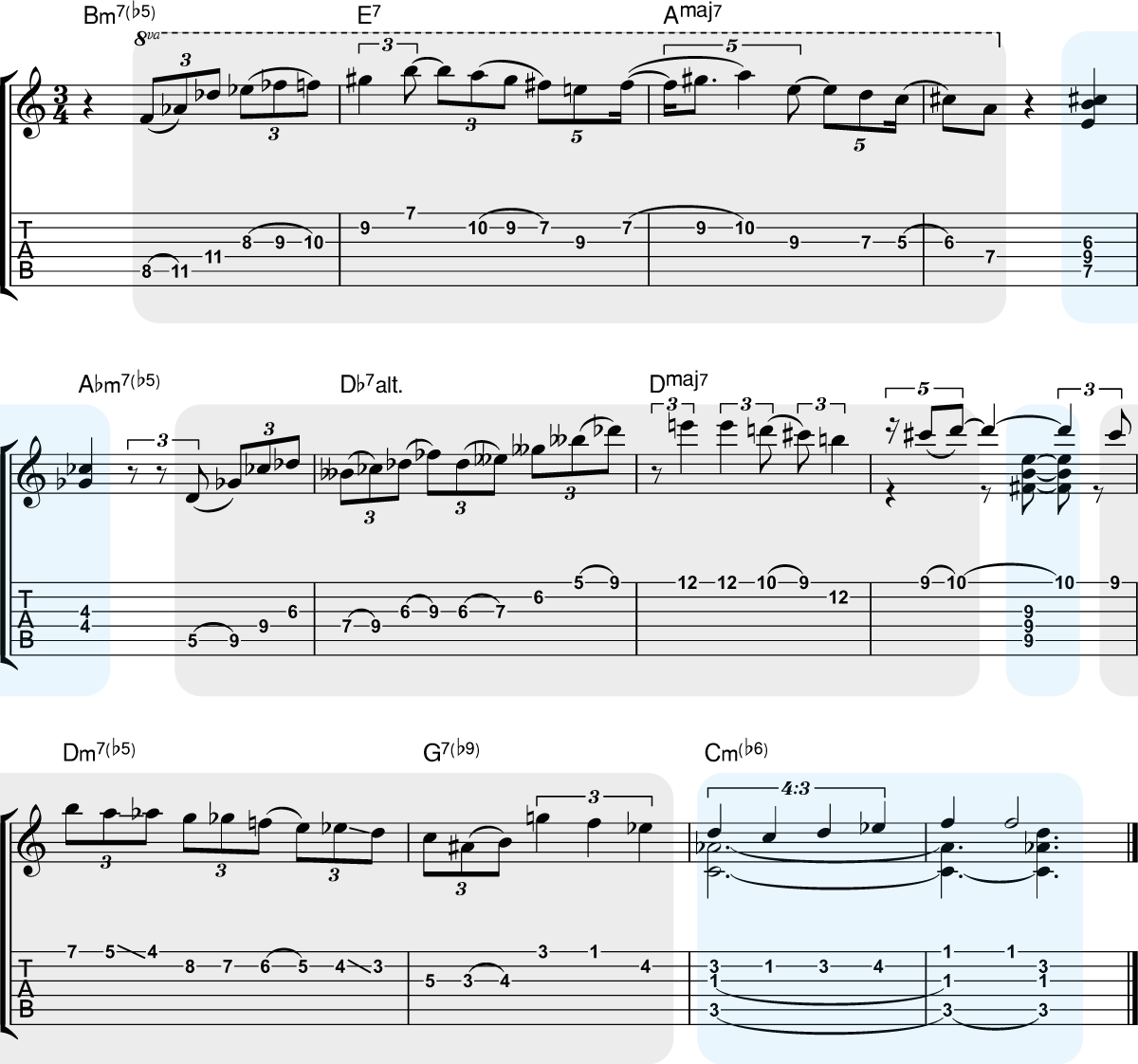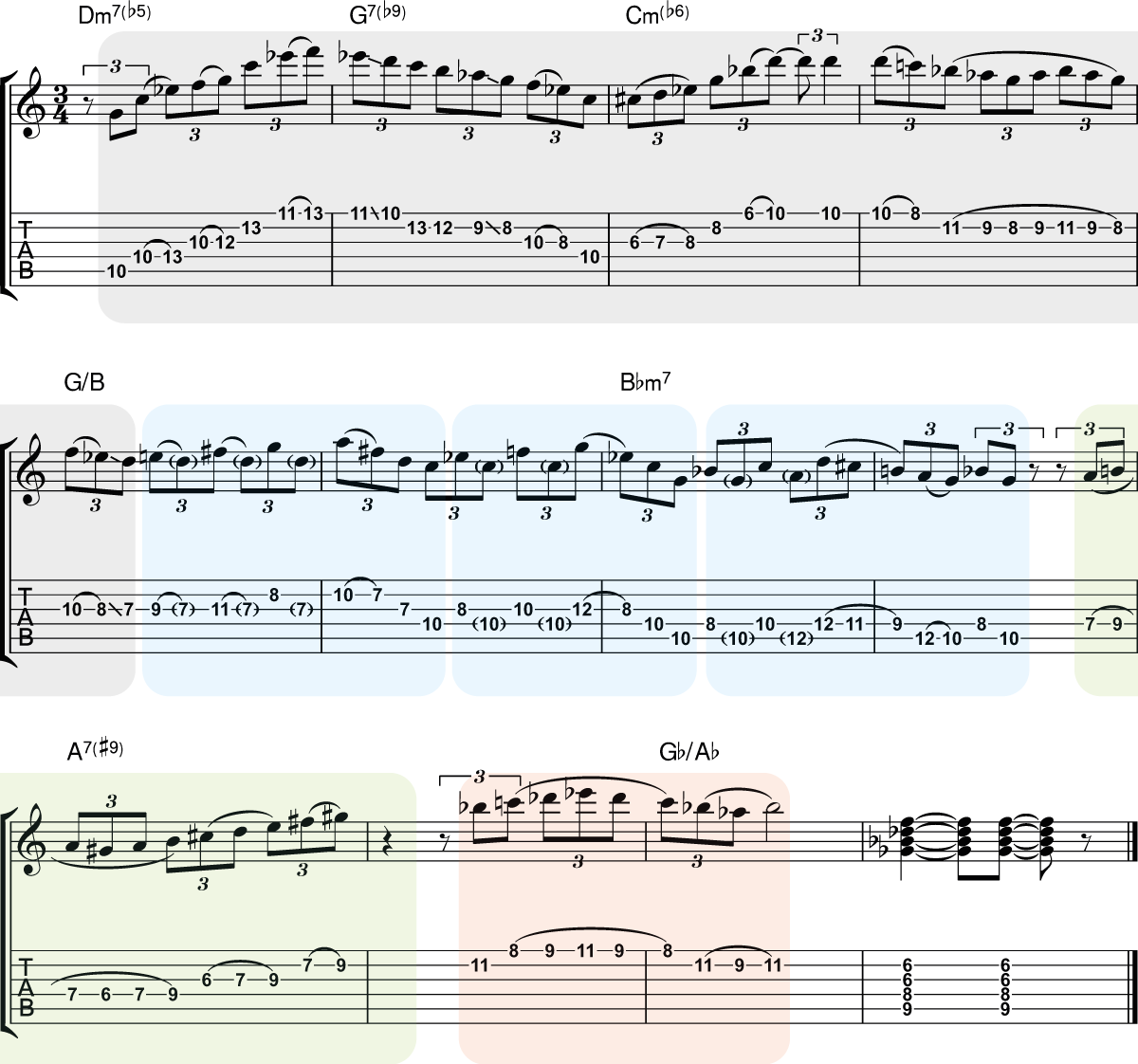‘Ron’s Place’ Arrangement
A luminary of contemporary jazz piano, Brad Mehldau’s bar-setting improvisational approach balances seemingly boundless technical facility with patient motivic development and a distinctive rhythmic sophistication.
As part of my own practice I transcribed and arranged for performance on the guitar Mehldau’s original piece ‘Ron’s Place’, as featured on the seminal ‘The Art of the Trio - Volume 1’ (1997).
The video demonstrates this arrangement, which can be purchased as a PDF here. Additionally, further down the page I’ve created a lesson showcasing 10 significant concepts Mehldau utilises and explaining a little around each.
If you’d like to support my work and go further in your study of these and other ideas please consider purchasing the PDF and get in touch for bespoke 1-1 coaching!
Ex 1
Adaptation of pianistic performance for the guitar generally involves reduced chord voicings. This example highlights 9 useful shapes which distil elements of Mehldau’s harmonic vocabulary.
Be sure to examine each in the context of the main transcription, which contains a range of additional chord types.
Ex 2 – 0:42 / Bar 45
Mehldau frequently employs melodic variation/counterpoint within what could otherwise be considered ’block’ voicings (grey). Note this chord’s arrangement across non-adjacent strings, necessitating a fingerstyle or hybrid picking right-hand technique.
The extract closes with a series of double stops (blue), which we will see engaged as a halfway house between melody and harmony throughout examples to follow.
Ex 3 – 1:55 / Bar 121
Expanding upon the principles of Example 2 is further use of double stops (grey) followed by a more extensive ‘call and response’ double stop/melodic counterpoint (blue).
Even 8th notes in the context of a swing rhythm section feel (green) create subtle rhythmic tension. This technique is referenced again at example 8.
Ex 4 – 3:31 / Bar 225
A variation on the theme of ‘call and response’ established at Example 3, this passage removes counterpoint whilst maintaining the clear implication of separate lower and upper voices (grey and blue respectively). ‘Unguitaristic’ parallel double stops may require some extra technical attention.
Switching harmony to the lower voice, Mehldau interjects a series of propulsive voicings between a rising melodic motif (green).
Ex 5 – 2:38 / Bar 168
Maintaining a generally consistent melody to double stop structure (grey), Mehldau creates interest through variation and displacement, eventually reversing the motif’s emphasis (blue).
Again, such use of double stops is fairly unconventional in the context of guitar performance but absolutely realistic with appropriate arrangement and practice.
Ex 6 – 3:38 / Bar 232
Example 6 develops the previous extract’s double stop legato technique (grey) to include a further diad (blue).
Although initial harmonies are viable as single guitar chord shapes, the section progresses to include a variety of unusual slide and hammer-on solutions (green and red).
Ex 7 – 1:17 / Bar 121
A short passage of motivic development featuring organic variation upon a well defined and memorable original phrase (grey).
Chords punctuate the melodic line (blue) and are eventually adapted to reflect aspects of the motif’s rhythmic content (green).
Mehldau features such development throughout the main transcription.
Ex 8 – 1:48 / Bar 114
A further illustration of even 8th notes in the context of swing feel accompaniment, as introduced at example 3.
Ex 9 – 2:08 / Bar 135
Example 9 combines 3 triplet phrases (grey) separated by supporting chords (blue), as per example 7.
Phrase 1 begins with an implied Db7 structure before resolving via a Blues-tingled E Mixolydian line to A major 7. Note an intentionally ‘loose’ time feel across bars 2 and 3 of the extract.
Phrase 2 references the arpeggio structure employed at the outset of ‘Phrase 1’, continuing the idea across a wider range. Mehldau cites a further recurring rhythmic effect, creating tension with slight hesitation before resolving to D major. Notice subsequent comping is included as counterpoint to a sustained melody note.
Phrase 3 takes the form of a snaking, often chromatic minor II-V-I descent. Observe a chromatic approach to the 3rd of G7 (A# to B), similar to Mehldau’s resolution to A major during Phrase 1 (C to C#). A concluding sustained chord provides counterpoint to an active upper voice, as previously seen at example 2.
Ex 10 – 2:53 / Bar 183
A final triplet line containing one of Mehldau’s most recognisable vocabulary items (blue).
Beginning with a clear minor II-V-I (grey), Mehldau moves to a strong polyrhythmic motif at line 2 (blue), implying groupings of 2 over the established triplet subdivision. The 3 iterations of this idea see it contract, extend and modulate to imply G major, D minor and G minor.
Combined harmonic and rhythmic ambiguity create significant tension, which is resolved at line 3 when Mehldau substitutes A major in place of A7#9 (green) before reverting to the expected harmony, Gb/Ab (red), albeit anticipated.
